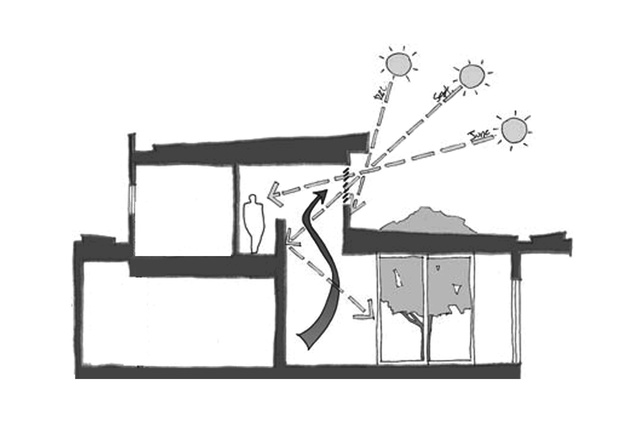Glazing and energy efficiency
Today’s glazing options paired with strategic design can make glass an important part of the environmental strategies in house design. This discussion by Scott Drake links to a case study of the Caulfield House by Bower Architecture.
Currency crises are hardly new. Following the one that befell England at the start of the eighteenth century, the Crown introduced a tax on windows. At the time, taxing income was considered an invasion of privacy, but taxing windows was seen as an obvious way to raise money in proportion to the wealth of homeowners. The bigger the house, the more windows. As with today, people found loopholes, such as constructing blind windows by placing a brick wall where a window should be.
This is one example of how rules shape design. Rating systems are another. I am a great supporter of rating systems, and the way they encourage good environmental practices by distilling complex aspects of building performance down to the comparable measure of the number of stars. This has helped countless companies and government agencies to improve environmental performance by trying to outdo one another. But rating systems can inadvertently omit certain key aspects, such as measuring insulation without accounting for thermal bridges caused by downlights or window frames, or recommending relative limits to window area (as a percentage of floor area) without penalizing excesses in absolute dwelling size. When first introduced, domestic ratings systems were simplified so that they could apply to both speculative and purpose-built houses. Pressure from developers meant that measures of site-responsiveness were played down in favour of more abstract measures such as average insulation value. Using the same rating system for site-specific and pre-designed solutions is of course necessary but problematic. On the one hand, architects are more likely to build houses with larger budgets, either due to size or level of finish or, more often, due to innovative or unique designs. But on the other hand, architects will often adopt an economy of means and a responsiveness to site to create buildings that are more efficient in terms of both spatial provision and energy use. And architects love using glass.
For all the lamenting about burning fossil fuels, some pretty impressive things can be done with fire. Not least is the transformation of sand into liquid silicon dioxide, which is then poured onto a bed of molten lead to form large, flat sheets of “float” glass. These sheets are a magnificent building material – not for holding loads, of course, but as curtain-wall cladding for buildings with steel or concrete frames. Compared to other building materials, glass is thin, lightweight, cheap, low maintenance and largely immune to the ravages of weather. It can be laminated to alter its colour, safety, strength, insulation value, emissivity, translucency or reflectance. It can provide a sealed envelope to contain conditioned air. It can be layered closely together to create double-glazed windows or further apart to create double-skin facades.
Glass is arguably the characteristic material of Modernism. Although white walls and black steel were used to good effect by the masters, it was glass that made real their dreams of transparency and spatial continuity, abstraction and purity, cleanliness and agelessness. From the greenhouses and shopping arcades of the nineteenth century to the high-rise towers and democratic assemblies of the twentieth century, from the Maison de Verre in Paris by Pierre Chareau (1931) to the Kunsthauses in Bregenz (Peter Zumthor, 1991) and Graz (Peter Cook and Colin Fournier, 2003), glass has played a fundamental role in the redefinition of space in the Modern era. Architecture is no longer a matter of windows in walls (if it ever was), but an ethereal art of shadow and light, of reflection and refraction, made possible by the remarkable properties of glass.
In the years since it was first envisioned, the glass-clad, high-rise office tower has proved a more influential typology than the glass pavilion house. Today it is even possible for a fully glazed and airconditioned office tower to score a five-star rating, much higher than would be achieved using a similar approach to a domestic design. I am reminded of Glenn Murcutt’s story about his visit to Mies van der Rohe’s Farnsworth House (1951), his discovery that the building needed to be airconditioned to cope with the Illinois summers and his commitment to developing a more environmentally responsive version of the typology. The result, as we now know, is a body of work that earned Murcutt the Pritzker Prize as he (almost) single-handedly redefined the way architecture related to the Australian landscape.
For architects, glass determines the physical and psychological relationship between interior and exterior space. And with current innovations in thermal regulation, energy recovery and integral shading, glass will no doubt play an important part in the environmental strategies of the future. Let’s hope it scores well.
See the Caulfield House case study here.










